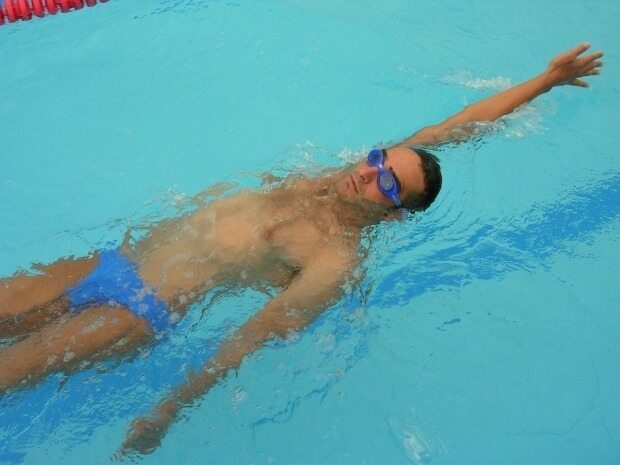| # | The Movement | Regular Swimming | |
|---|---|---|---|
| 1 | Breathing | The breathing is normal Inhaling and Exhaling mostly from the nose | Inhaling and exhaling in every movement. Inhaling as the arm exit the water and exhaling from the nose as the arm enter the water. Exhaling from the nose allow us to regular the amount of air that exit and maintain longer the oxygen. |
| 2 | arms movement rhythm | Like a wind turbine, fast rhythm as long as you pull enough water and able to progress | The arms move like a wind turbine. The rhythm is not constant we make a fictitious stop as we progress, in order to stretch as much as we can the lateral trunk. |
| 3 | The distance between the shoulder and the ear as the arm enters to the water | The shoulder is as near as possible to the ear | The most important this is to respect the flexibility of the shoulder joint. The instruction is not flexing the elbow as the arm enters the water. The angle between the arm and the ear correspond the flexibility of the shoulder. |
| 4 | The hand | the fingers are in full adduction as the hand pulling the water and the radio -carpal joint is in a constant movement in order to pull the maximum amount of water | The hand is loose and the fingers and slightly open, the radio -carpal joint is in neutral position. |
| 5 | The head | In a regular swimming the head is straight many people tend to keep the head in flexion or extension | The head maintain a neutral position in continuance to the spine. During the swim it’s important taking into consideration the anatomic structure of the swimmer. |
| 6 | Legs rhythm | The rhythm is fast 6 movements of the legs for every movement of the arm | Leg movements are being created only by the roll of the body, they don’t move independently. Legs movement may create tension in the lower back. This way we protect the lower back and the hip joint. |
| 7 | Legs movements | The motion begins from the hip with a strong beat of the knee and ankle | Leg movements are being created only by the roll of the body, they don’t move independently. We maintain slight flexion of the knee. |
| 8 | Wall approach | When the swim is sequential, the flip turn is followed with a strong extension of the back as the swimmer changes his position from prone to supine. | It’s important to count the movement of the hand, this way we can be prepared and stretch the arm forward the wall. It’s important to keep the back in a neutral position and not create extension as the hand touches the wall. |
| 9 | Arrow and the first push of the wall | A deep exit accompanied by dolphin movement and extension of the back | Inhaling before exiting. Head in continuance to the spine, arms in arrow position. |
| 10 | first pull | At the end of the first pull the body appears in the water line | We pull the legs against the wall and begin the first pull. We start the first pull slowly for protecting the back. The separation between the movement of the hips and the first pull is very important. |


